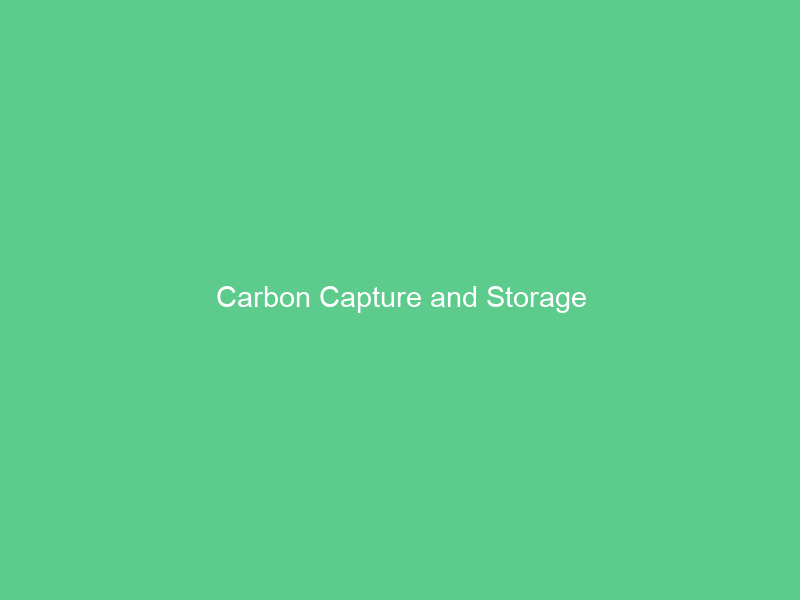Carbon Capture and Storage (CCS) technologies reduce CO2 emissions from power plants and industrial facilities, with 39 operational projects and 29 in construction or advanced development globally.
CCUS projects store carbon underground in geological formations similar to oil and gas reservoirs, such as saline formations. Coal beds also present potential storage solutions.
What is CCS?
Carbon capture and storage (CCS) seeks to mitigate emissions that contribute to climate change by sequestering carbon dioxide produced from industrial processes like steel production, cement manufacturing and power generation, transporting it underground for storage. CCS has become a critical element of the global energy mix and can play an essential part in meeting our climate goals alongside renewables, nuclear power and fossil fuels.
CCS projects often partner with large carbon emitting facilities like power plants, factories and oil refineries to remove emissions directly at their source or capture and transfer CO2 between facilities. CCS can either work by acting at one facility or capturing and transporting it between facilities.
CCS is one of the few technologies capable of cost-effectively reducing greenhouse gas emissions at scale, though it may be expensive and energy intensive; other emissions-reduction options like solar and wind power, electrification and mass transit may be less costly and more effective. Therefore CCUS must form part of an overall low-carbon strategy.
Capture
Today’s carbon capture and utilization systems (CCUS) technologies can capture up to 90 percent of carbon emissions from power plants and energy-intensive industrial processes such as cement production, steelmaking, petrochemical refinement and refining processes. Once collected, CO2 is typically stored deep underground geological formations; alternatively it may even be utilized to produce products like fuel or building materials (known as carbon capture and utilization or CCU).
CCUS is typically applied to large point sources that generate electricity or process fossil fuels like coal, oil or natural gas; however it is also possible to remove historical emissions using direct air capture (DACCS).
Facilities equipped with CCUS use various processes that chemically separate CO2 from flue gases at their point source before it exits through smokestacks, then compress and inject it deep underground geological formations such as depleted oil and gas reservoirs or coal beds or geological saline aquifers.
Transport
Carbon capture and storage (CCS) technologies capture CO2 from flue gas at large industrial facilities like power plants or factories producing cement, steel, fertilisers or other products, before either storing it underground or incorporating into other materials for use as raw material. Multiple CCS technologies exist such as post-combustion capture, oxyfuel capture or direct air capture and storage (DACCS).
Captured CO2 is then safely transported from its source to permanent storage sites via pipelines, ships or rail tankers – typically injection into geological formations such as oil and gas reservoirs or coal beds which can be safely sealed for long-term storage.
Capture and storage technologies can be implemented at both new and existing facilities so their emissions do not contribute to climate change. Carbon Capture and Storage Units (CCUS), however, should be deployed alongside other methods that remove CO2 from the atmosphere in order to achieve net zero emissions at scale. These options include bioenergy with carbon Capture Storage (BECCS) as well as direct air Capture and Storage (DACCS), all which complement rather than replace efforts made towards climate mitigation.
Storage
Carbon Capture and Storage (CCS) refers to an array of technologies that captures CO2 emissions from large industrial facilities like cement mills, steel plants, petrochemical plants, coal power plants or directly from the atmosphere and stores it underground or injects it into oil or gas reservoirs for enhanced oil recovery (EOR).
Once the CO2 has been isolated from other gases, it must be compressed into a liquid state for transport via pipeline, ship or rail tanker to its final storage destination.
CCS projects worldwide have successfully stored CO2 into these well-documented geological formations for long-term storage using carbon capture and storage (CCS).

